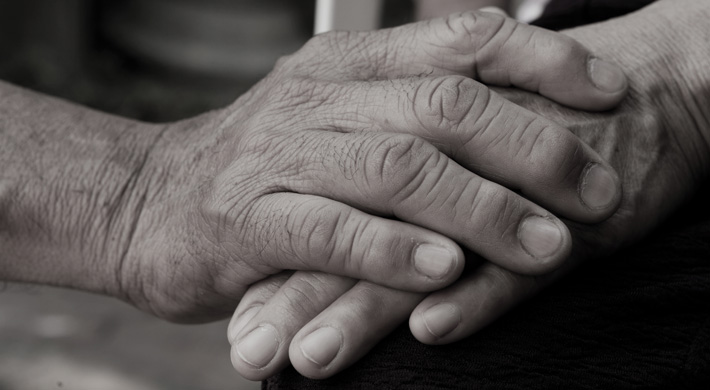
I have not run into anyone yet without strong views to share on the Supreme Court’s decision on Friday in Carter to strike down the assisted suicide prohibition in the Criminal Code. In my circles, those views have been mostly positive but I respect the depth of feeling on this issue and those for whom assisted suicide is antithetical to their beliefs, whether religious or based on policy concerns in the desire to protect the welfare of vulnerable people. Many will be writing on the leadership demonstrated by the Court, or the impact of Carter on Charter jurisprudence, or how this represents yet another setback for the Harper Tories from the McLachlin Court. My interest is more in where we go from here.
Often, a year at the Supreme Court there is marked by a single issue and landmark decision. Carter may turn out to be such a decision – only time will tell. What I do know is that the Rodriguez decision from 1993 had special resonance – especially for those like myself lucky enough to serve as a law clerk at the Court that year. I was a clerk for Chief Justice Lamer, who was part of the four judge dissent in Rodirguez (though together with only Justice Peter Cory in finding the assisted suicide provision unconstitutional on the equality provisions in s.15 of the Charter).
There was no case that so immersed the clerks as well as the judges that year. Assisted suicide is not a case of the criminal law going after bad people who caused harm to others. Rather, it is a case of the criminal law going after good people who help others by causing them harm. This is an area where the abstract language of the Criminal Code sheds little insight into the issue. Rather, the provision takes on life in the context of a particular person’s death. If a person you love is able to enhance their quality of life for longer, or able to exercise the same kind of autonomy that people able to choose when to die can exercise, then the prohibition appeared cruel and undermining of human dignity. If a person you know is vulnerable and compromised by illness and/or disability, the prohibition appeared protective, life-affirming and enhancing of human dignity. Context does not just affect the issues arising from dying with the help of a physician – it is the issue.
In 2012-2013, B.C. Constitutional Rights litigator (and lead counsel in Carter) Joe Arvay, Q.C. came to Osgoode Hall Law School as one of the inaugural McMurtry Visiting Clinical Fellows. He delivered the annual Lewtas Lecture that year on the case and the issue of a ”œconstitutional right to die”. The atmosphere in the room was charged as he outlined his approach to the balance between personal autonomy and dignity on the one hand with protecting the vulnerable and ensuring safeguards and oversight on the other. He discussed the passionate opposition of many disability advocacy groups to his position, and even the difficulty he encountered in finding physicians to serve as expert witnesses at trial.
While I was persuaded by the overarching Charter principle – deciding on one’s own death is one of the most important manifestations of human dignity, as poignantly captured most recently by Dr. Donald Low’s compelling video – I was troubled then (and now) by what would happen when the constitutional lawyers went on to other struggles, and left the dying process to patients, families, doctors, and hospitals. What in Carter appears as a question of Charter rights will give way to a far more vexing puzzle of administrative law. Who should decide where assisted dying is available, and the proper standard of practice? Who will oversee the process? The Supreme Court has no jurisdiction over standards of medical practice and key aspects of the issue must be developed and applied self-governing professions. These rules are framed by a patchwork of provincial and territorial legislation, such as Quebec’s recent Bill 52 protecting the right to die with dignity, not to mention the possibility that the federal government will follow up Carter with a more narrowly tailored Criminal Code provision dealing with assisted suicide outside the narrow exceptions set out by the Supreme Court. Palliative and hospice care remains one of the more poorly funded and least understood spheres of medicine. The health professions and funding models are understandably directed at healing people. Where there is no prospect of a person recovering, and no way left to heal, the role of health professionals becomes less clear. Long before Rodriguez and Carter, physicians have provided palliative care which they – and their patients – knew would hasten death. While this is different than administering life-ending measures in the context of assisted dying, for many observers, this is a difference of degree rather than kind.
Like so much in law, the easy part is figuring out the right or obligation at issue – the hard part is making it work. The reality of dying will fall not to rules (no matter how carefully crafted or compassionately intended) but to discretion, and to human judgments. What is unbearable pain? Who is deciding under duress? Who is genuinely motivated by another’s welfare and who has ulterior motives? Physician assisted dying is far from unique in this respect, but it is nonetheless striking how little the practical realities and lived experience with such settings figures into our constitutional debates about Charter principles. At the end of the day, the right to die with dignity is not to be decided in courtrooms or statutes, but rather in moments shared between families, health professionals and administrators. The Carter case is not the end of the dying with dignity debate (any more than Rodriguez turned out to be); rather, it is only the beginning. Now comes the hard part.
This commentary originally published by Canadian Lawyer.






